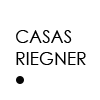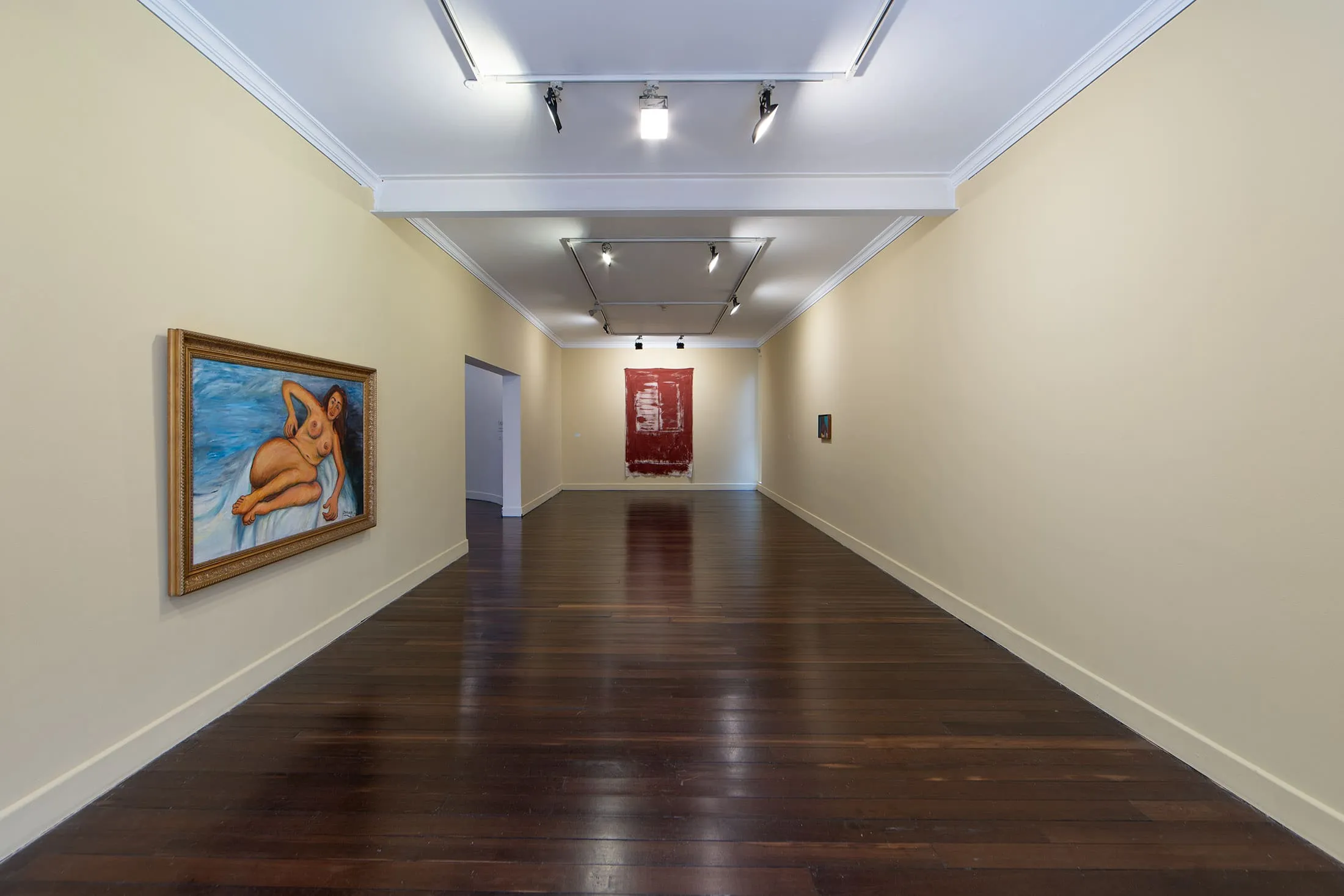Carrying the Pain: A Look at the Drawings of Débora Arango, Beatriz González, and Rosemberg Sandoval
"Life with all its admirable force can never be appreciated among the hypocrisy and concealment of the upper social strata: that is why my subjects are hard, pungent, almost barbaric."
Débora Arango
Débora Arango (1907-2005), Beatriz González (1932), and Rosemberg Sandoval (1959) are three artists from different generations committed to questioning an order. For decades, they have shaped their very own views of the complex socio-political dynamics of their country, thus giving a voice to those marginalized subjects. Thanks to their critical, sharp, and contentious work, they have been tireless in destabilizing the official narratives to turn their gaze on the harsh and painful reality of their environment, claiming memory and dignity.
Carrying the Pain: A Look at the Drawings of Débora Arango, Beatriz González, and Rosemberg Sandoval brings together a selection of historical and recent drawings by three great masters who, based on their contrasting techniques and approaches, address the experience of pain as a timeless human condition, one that we have avoided to look at head-on. As subjects mistreated and made invisible by history, they express the burden of deep suffering as a result of death, injustice, war, displacement, stain, and anguish.
A body of work that includes portraits and a self-portrait draws attention to the individual and their expressive face that feels and processes suffering in a particular way; here, portrait and self-portrait become mechanisms of psychic exploration and self-knowledge. The second body of work comprises drawings in which the body keeps and responds to pain with unhinged, collected, dejected, or sometimes explosive and rigid body postures. In many cases, we see subjects carrying death, absence, poverty, rage, famine, childhood, but also hope. Both bodies of work, however, condense and make visible in a plastic way the sensibilities and convictions of the three artists while allowing us to see their particular way of approaching the drawing technique.
Carrying the Pain: A Look at the Drawings of Débora Arango, Beatriz González, and Rosemberg Sandoval explores the ways in which painters Débora Arango and Beatriz González and performance artist Rosemberg Sandoval try to understand the world and give shape to their impulses, from very diverse artistic practices and visual solutions, but in which drawing undoubtedly occupies a space of great relevance.
For Débora Arango, a precursor of modern art and “agent of the first aesthetic revolution” in Colombia, according to Beatriz González, drawing operated as a tool of great immediacy and intimacy that allowed her to unload her ideas on what she saw, thought, and imagined. Thanks to her traditional academic training, she also conceived of drawing as the first step in defining her ideas that she would later delimit in her watercolors or paintings in larger formats. In the form of quick visual annotations or records without any type of shading or spatial description, the medium of drawing allowed her to understand or record her view of society, specifically of those subjects that no one looked at, mostly marginal, and that later ended up populating her watercolors and paintings: nuns, prostitutes, mothers, priests, soldiers, indigents, protesters, workers, soldiers, and politicians.
Made on small-format papers—some on sheets of ringed notebooks, others on sheets of hotel notebooks and the backs of the paper packaging of veiled stockings—her drawings of great simplicity show the importance of the human figure, in many cases depicted with deformities, exaggerated attributes, and in body positions expressive of a wide spectrum of emotions and psychological states where sadness, defeat, madness, uneasiness, and misery stand out. It is worth noting that over time, Arango understood the singular value of her drawings because she signed a large part of them in ink after having elaborated most of them in graphite. Always critical, Arango’s drawings, in the words of Juan Mejía, have the ability to touch “the most critical fibers of our human cultural fabric.” Like her watercolors and paintings, Arango’s drawings are like stepping stones in her grand mission to reveal to the world “life in all its force.”
For Beatriz González, “drawing is the artist’s conscience.” This well-known statement by one of the most important Colombian artists in our country and the international artistic field shows the fundamental place that drawing occupies in her practice and its relevance in the total understanding of her work. It also talks about the magical process of translation that occurs when González chooses a piece of news from the press and decides to transfer it to the artistic field. It is there, in that precise act of intuitive reflection, that González “creates a new look, a new consciousness” of reality.
Since the 1960s, González thought of drawing as an autonomous medium, freeing it from its function as a sketch before a definitive work. This is evident in her series Niña Johnson (1965), based on an existing image and characterized by its visual simplification and vigorous strokes that build a flat image with somewhat deformed features. Later drawings, made in the late 1970s and early 1980s, based on fine and subtle graphite lines depicting the political life of former President Turbay, reveal her great mastery of drawing. They become, in the words of Carolina Ponce de León, “a creative process that registers the dictates of her intuition, her sensitivity, her subconscious knowledge.” Over time, González’s drawing became more complex as she introduced in her compositions the combination of given images with those of her imagination. The occupation of the Palace of Justice in 1985 meant a turning point in the artist’s work. The tragic event forced her to cast her gaze on the profound pain of a country in conflict, leaving behind the ironic and mocking tone of much of her previous work. Thus, she transformed her drawing with an incisive stroke and with the implementation of the shading of flat figures, giving them the quality of icons that symbolize pain, mourning, and death.
For over 40 years, artist and performer Rosemberg Sandoval has shaped an artistic practice conceived as a space of existence, struggle, freedom, and denunciation. Time and again, Sandoval has chosen the body as his preferred medium to give shape to his thoughts; however, his drawings, in the artist’s words, “function as a very sharp and exquisite inner voice.” The great value of drawing in Sandoval’s performative practice lies in its approach to the medium as “codified and secret writing that functions as part of that voice of legitimation and consensus.” It arises in this way thanks to his training at the School of Fine Arts of Cali and the constant contact with his teacher and artist Carlos Correa, precursor of social art and denunciation in Colombia and great friend of Débora Arango.
The vigorous and aggressive stroke that has always characterized Sandoval’s drawing becomes apparent for the first time in 1977 in “Crisis,” a portrait of his sister Silvia, who, from an early age, suffered from mental disorders. By using the crayon as a dagger and the paper as a support and unloading space, drawing becomes an insightful exercise of reflection permeated by a gestural and performative quality that will mark a clear line in later drawings and bodily actions made with raw materials such as human blood, dirt of a homeless person, iron oxide, graphite, and dagger, in which the artist transgressively documents an obsessive and profound reading of his existence. Sandoval resorts to bodily actions and drawing as a response to his need to reconstruct fragments of a life marked by forced displacement, pain, death, and illness. In the artist’s words: “I think that academy in the mid-1970s, with a handful of excellent teachers, the sick atmosphere of my home, and a fleeting connection with the insurgency and my libertarian and suicidal spirit, wove me as a Performer Drawer.”
Over the decades, Débora Arango, Beatriz González, and Rosemberg Sandoval have shaped their convictions and research linked to the history and culture of Colombia traversed by pain, war, and injustice. Despite their very diverse plastic languages and aesthetic criteria, they share a critical spirit and a strong commitment to themselves to raise their voices in the face of a broken order to show us the humanity behind so much concealment and hypocrisy. Carrying the Pain: A Look at the Drawings of Débora Arango, Beatriz González, and Rosemberg Sandoval—an exhibition with a museographic approach that moves away from the chronological and categorical and integrates drawings by the three artists—seeks to establish parallels and weave links between works that evidence very different ways of approaching drawing. In addition to celebrating drawing as that first instant in which the intangible takes shape, the exhibition exalts visceral works that move us and remind us that, in the words of Rosemberg Sandoval, “art is the only thing that offers us to exist and fight as individuals and not as sheep.”







.webp)


















